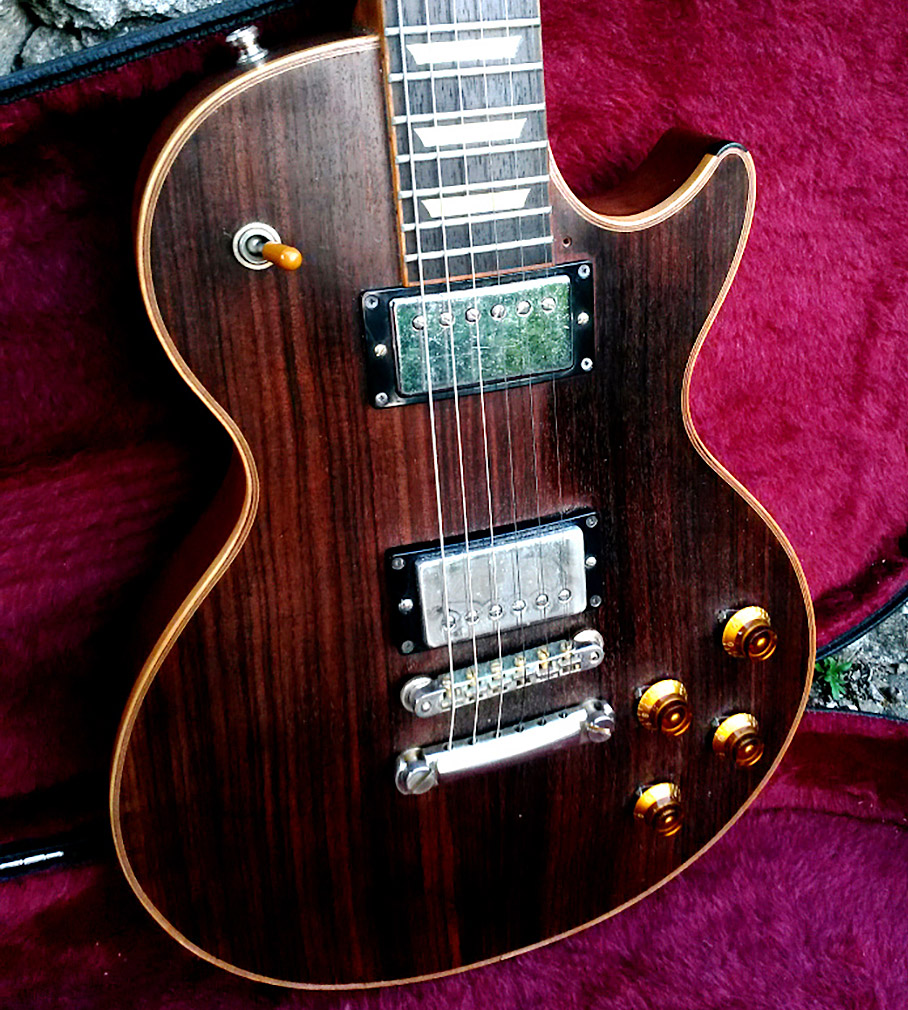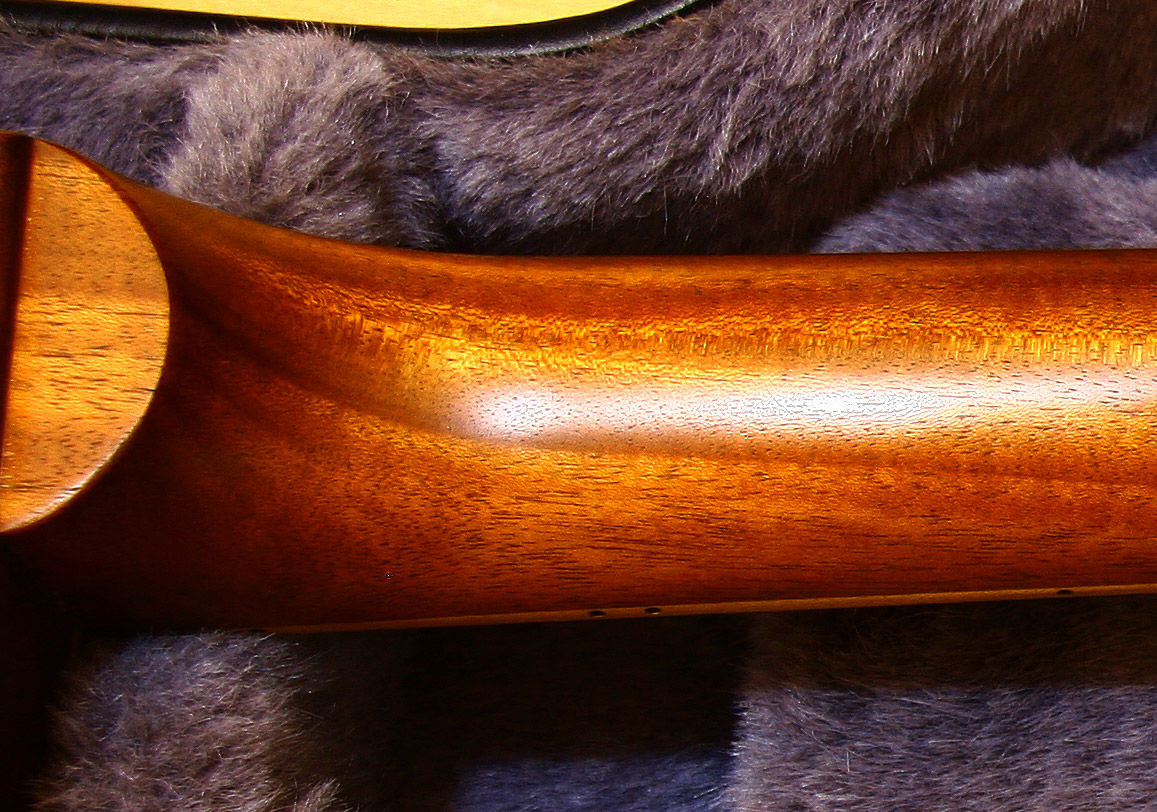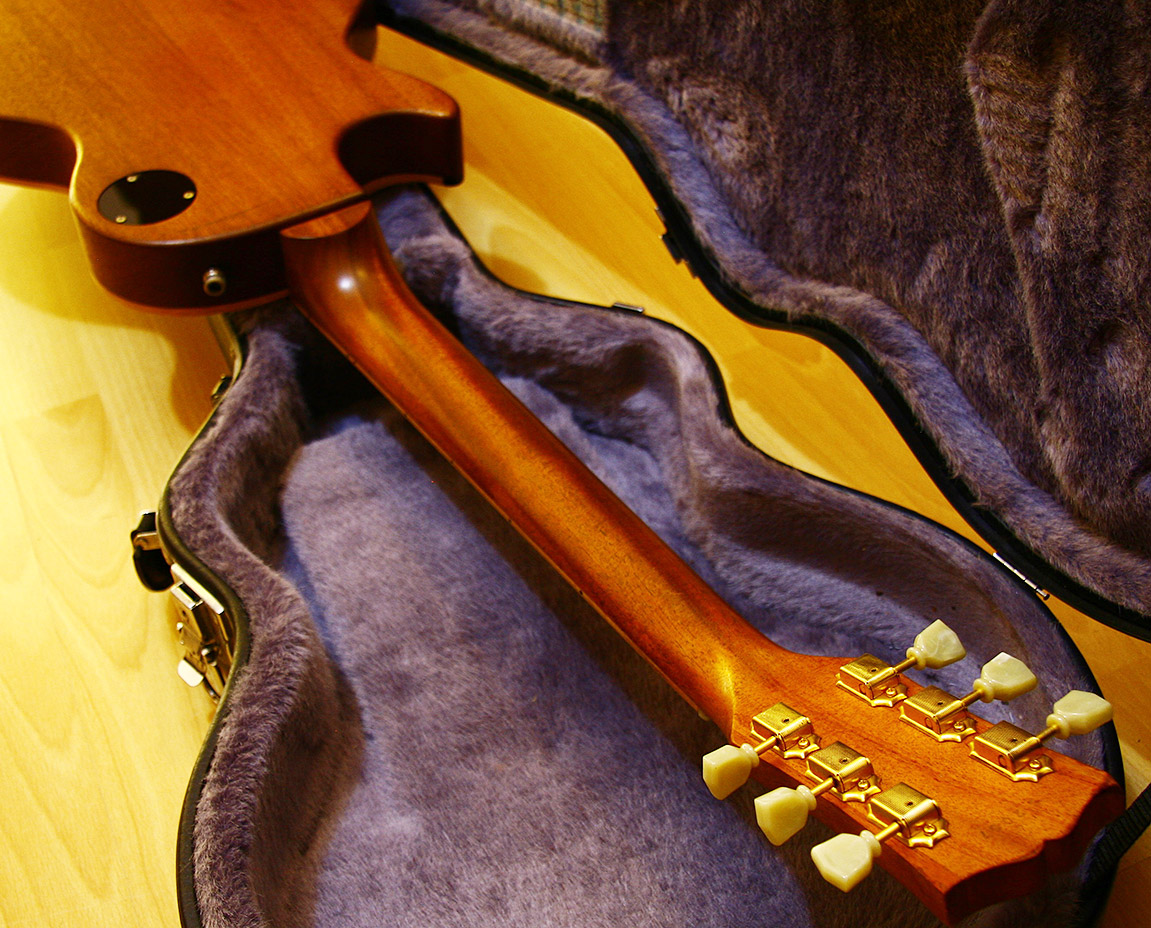”The “Orville by Gibson” guitars were produced in Japan from 1988 to 1998 and were in effect Gibson guitars marketed for the Japanese domestic market. Production was handled by Yamano Gakki and the instruments were built at the Fuji-Gen Gakki and Terada factories. Conceived to be high-quality guitars, they combined renowned Japanese lutherie with original Gibson electronics.
Lorenzo
Orville by Gibson 1994 Les Paul Standard Rosewood from 1994, known as Catalog Model or also Exhibition Model.
These guitars were made in the Fujigen plant to appear on the cover of the 1994 edition of the Orville by Gibson catalog and were built in a very limited number.
Guitars so rare that you could practically not find news even on the Japanese web, 2 models were created with 2 different tops: walnut and rosewood, like the example presented here and, as far as it is possible to understand, each piece differs from the others in some details.
The rumors speak of woods (first choice) supplied directly by the American parent company together with the ’57 Classic pickups: the quality of the materials and construction is visible and the mahogany here expresses it in all its bright splendor.
For a long time, I thought that the ebony portion of the binding on the tip of the lower horn was a repair due to a breakage of the binding itself which is instead made of maple, then seeing that it is also present in the few photos available of other examples of that series I realized that it is just a desired effect. Not that I had any doubts about the now acclaimed expertise of the Japanese luthiers, but it is actually a very unusual habit.
Let’s have a look at the specifications:
Orville by Gibson LPS-R Limited Edition
Made in Japan 1994
Mahogany body.
Carved Maple top with Rosewood veneer.
One-piece Mahogany set neck.
Rosewood Fingerboard.
Maple binding. 22f. Trapezoid inlays in natural MOP.
Gibson pickups PAF Patent Sticker
Inked serial number
Oil Finish
Full original.
Carved Ebony lower bout.
Rosewood veneer headstock.
Brass truss rod cover.
It is really difficult to fully convey the beauty of the woods and colors in photography, especially the charm of the natural mother-of-pearl of the frets, whose creamy hue beautifully matches the warm tones of mahogany and rosewood. The oil finish gives the whole softness to the touch and that sensual honeyness typical of vintage instruments: it is certainly an instrument that does not go unnoticed and that we often find ourselves admiring enchanted in sacred adoration.

















